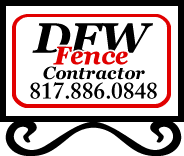
When embarking on your Arlington fence project, it is imperative to acquaint yourself thoroughly with the local restrictions and Arlington fence regulations governing such endeavors. Failure to do so could result in the unfortunate scenario of having your fence demolished and being subjected to fines. The regulations specific to Arlington are distinct in their structure and encompass a variety of laws pertaining to the location, materials, and dimensions of your fence. Therefore, a comprehensive understanding of these regulations is essential to ensure compliance and the successful completion of your project without any legal complications.
Arlington Fence Height
In Arlington, the maximum allowable height for fences is 8 feet. Front Yard Arlington fence regulations:
- Height Limit: A critical aspect of Arlington’s fencing regulations pertains to the permissible height of fences installed in front yards. According to these regulations, fences erected in front yards are subject to a strict height limit of no more than 4 feet. This limitation is designed to preserve the open and welcoming character of residential streetscapes, ensuring that front yard fences do not obstruct sightlines or create visual barriers that detract from the neighborhood’s aesthetic appeal.
- Material Requirement: Another key requirement for front yard fences in Arlington is the mandated use of metal as the primary construction material. This specification reflects a commitment to durability, security, and uniformity within the streetscape. By standardizing the material used for front yard fences, the regulations aim to enhance the overall cohesion and aesthetic consistency of residential neighborhoods, while also ensuring that fences withstand the test of time and environmental elements.
- Transparency Requirement: In addition to height and material considerations, Arlington’s fencing regulations also emphasize the importance of transparency in front yard fences. Specifically, these fences must maintain a predominantly transparent appearance, with a minimum transparency level of 75%. This requirement serves multiple purposes: it promotes a sense of openness and neighborliness, allows for natural light to permeate the streetscape, and ensures that front yard fences do not create an overly imposing or fortress-like presence. By prioritizing transparency, the regulations seek to foster a sense of community and connectivity within residential neighborhoods, while also contributing to the overall visual harmony and livability of the built environment.
Materials That Are Not Allowed for Residential Privacy Fencing
In the realm of Arlington’s fencing regulations, a stringent stance is taken against the utilization of chain link fencing, with exceptions narrowly delineated to ensure adherence to community standards and aesthetics. Chain link fencing finds itself relegated to a highly specific role: as a direct replacement for pre-existing chain link fences. The imposition is clear: under no circumstances should chain link fencing be employed as a substitute for fences crafted from alternative materials. This restriction serves not only to preserve the visual harmony of Arlington’s neighborhoods but also to uphold the notion of quality and durability in fencing structures.
Furthermore, a categorical prohibition extends to the use of materials not expressly designed or engineered for the purpose of fence construction and maintenance. This prohibition encompasses any materials that deviate from the intended standards, risking the compromise of both the structural integrity and visual appeal of the fence. The regulation thus emphasizes the importance of utilizing materials specifically vetted for their suitability in fencing projects, safeguarding against potential hazards and unsightly deviations from community aesthetics.
In tandem with these regulations, meticulous attention is directed towards the placement and spatial dynamics of fencing installations. Chain link fencing, in particular, is deemed incompatible with areas devoid of prior fencing infrastructure. This stipulation not only ensures a cohesive visual landscape but also underscores the municipality’s commitment to maintaining consistency and coherence in its built environment.
Appearance
If you are constructing a fence next to a street or road, the posts and rails must only be visible from inside the property, not from the street.
Homeowners and property owners are required by city ordinance to maintain their fence. The city of Arlington does not allow dilapidated, rotting fence. If the property owners must repair or replace the fence, they may not change the location or size of the fence. They must use the same material used to build the original fence OR find something as closely related in quality, size, material, color, etc.
We know this can be a lot of information to take in. If you have any questions, feel free to contact us at DFW Fence Contractor.
Arlington Fence regulations

